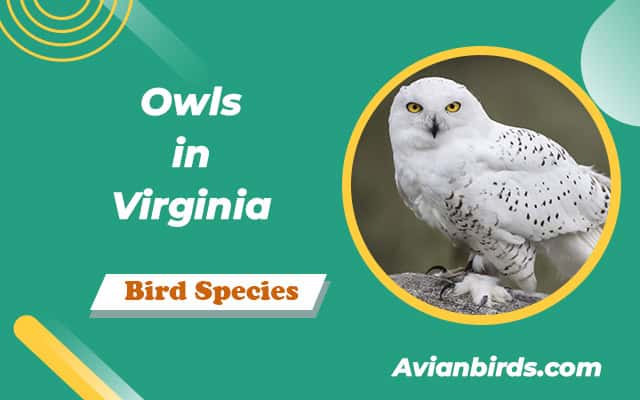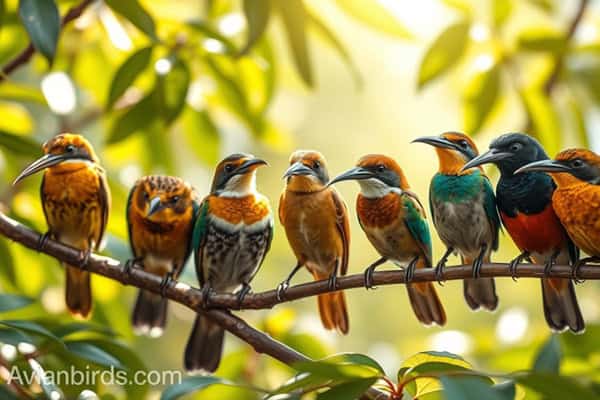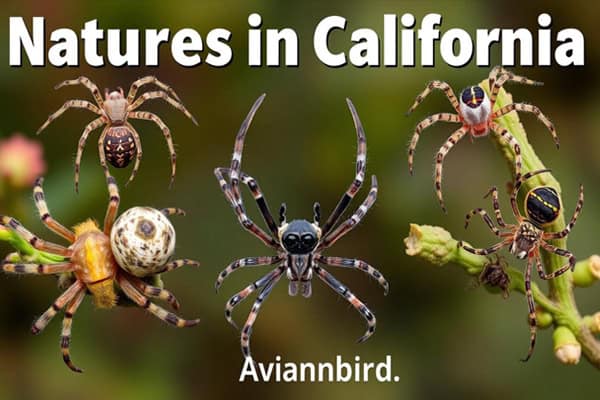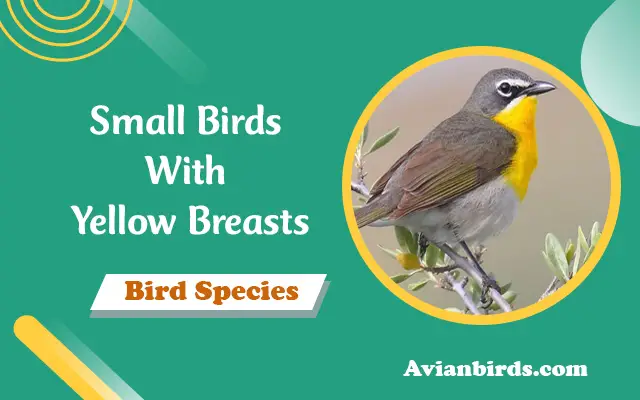8 Types Of Owls In Virginia (With Pictures)
Are you ready to explore the amazing world of Owls In Virginia? Virginia is home to a wide variety of these captivating birds. Each one has its unique traits and behaviours. This guide introduces you to eight fascinating owl species in the Commonwealth, from the majestic great horned owl to the elusive northern saw-whet owl. Get ready to explore the world of owls in Virginia, where you’ll learn the best places to spot them and how to identify them by sight and sound.
In Virginia, there are four coomon owl species that nest year-round: the Eastern Screech Owl, Barn Owl, Barred Owl, and Great Horned Owl. Additionally, the Short-eared Owl and Northern Saw-whet Owl are common winter residents and are known to breed in the state.
What is the most distinctive feature that helps you tell one Virginia owl from another? Let’s Dive into this comprehensive article to find out and unlock the secrets of these nocturnal predators.
Common Owl Species In Virginia
- Great Horned Owl
- Barred Owl
- Barn Owl
- Eastern Screech Owl
- Short-Eared Owl
- Long-Eared Owl
- Northern Saw-Whet Owl
- Snowy Owl (Rare)
1. Great Horned Owl
- Scientific name – Bubo virginianus
- Lifespan – 28 (maximum recorded)
- Size – 17 to 25 in
- Weight – 2.6 to 3.5 pounds
- Wingspan – 3 to 5 feet
The great horned owl is a wildlife symbol found in Virginia. It is renowned for its size, unusual ear tufts, and ferocious hunting abilities. One of the most well-known and common owls in the state is this one.

These owls can be found in a variety of environments, including broad fields, deep forests, and even cities. They do well in suburban and rural environments alike. This means that many people in Virginia see them frequently.
These owls live in various habitats, from dense forests to open fields and even urban areas. They can thrive in both rural and suburban settings. This makes them a common sight for many in Virginia.
Their population is closely watched to ensure they keep thriving in the state. The great horned owls of Virginia capture the hearts of nature lovers. Keep an eye out for this majestic bird as you explore the state’s rich bird life. It’s sure to leave a lasting impression.
2. Barred Owl
- Scientific name – Strix varia
- Lifespan – 24 years (oldest recorded)
- Size – 16 to 25 in
- Weight – 17 to 35 oz
- Wingspan – 38 to 49 inches
The Barred owl calls Virginia’s forests and woodlands home. It’s a medium-sized owl with a unique “who-cooks-for-you” call. It’s known for living in different types of habitats. Its rounded head, dark eyes, and brown and white feathers make it stand out in the wild.

Also, These owls love mature forests, swamps, and even cities with tall trees. They hunt at night using their sharp talons and great vision. Also, They eat small mammals, birds, reptiles, and amphibians. They make a lot of noise, often singing with their mates to claim their territory.
In Virginia, the Barred owl population is steady. But, they face dangers like losing their homes, getting hit by cars, and the harm from rodenticides. We need to work hard to keep these amazing birds in Virginia’s nature.
3. Barn Owl
- Scientific name – Tyto alba
- Lifespan – 25 years (captivity: maximum recorded)
- Size – 13 to 15 in
- Weight – 8 to 25 oz
- Wingspan – 31 to 37 inches
The barn owl is a standout among Virginia’s diverse owl species. It’s known for its beautiful looks and special traits. With its heart-shaped face and long legs, it’s a sight to see. Its silent flight and hunting skills make it a top bird in Virginia.
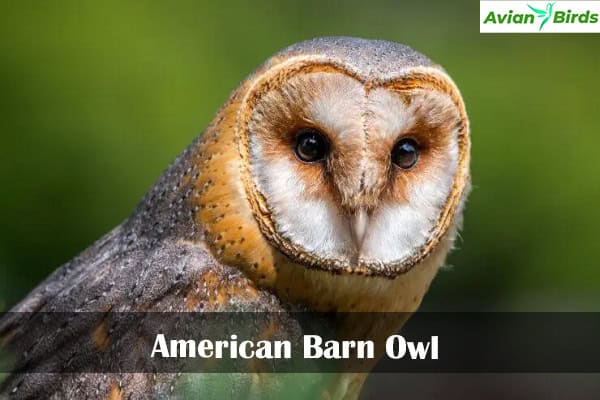
The barn owl lives in many places, like open fields, grasslands, and even old buildings. It’s adaptable, which helps it live in many parts of Virginia. People and nature lovers enjoy seeing its hunting skills.
Even though the barn owl is seen in some places, it’s still at risk. Habitat loss and the use of rodenticides have hurt its numbers in Virginia and the U.S. We need to protect it by putting up nesting boxes and using natural pest control.
4. Eastern Screech Owl
- Scientific name – Megascops asio
- Lifespan – 14 years (oldest recorded)
- Size – 6.5 to 10 inches
- Weight – 4 to 8 oz
- Wingspan – 18 to 24 inches
In Virginia, the eastern screech owl is a standout among owls. It’s small but a skilled hunter and adds to the area’s bird diversity. This owl lives in forests and suburban areas all year.

This owl is small but has a unique look. Its feathers are gray or reddish-brown, helping it hide in trees. Its big head and bright yellow eyes make it look special. It eats small rodents, insects, and even small birds, despite its size.
In Virginia, you can find these owls in many places, from deep woods to cities with tall trees. They like to live in nest boxes and tree holes. This lets many people see these birds up close, showing how diverse owl species are in the state.
Even though they’re not endangered, it’s important to keep forests and cities green. This helps the eastern screech owl stay in Virginia. By learning about these owls, we can help protect them for the future.
5. Short-Eared Owl
- Scientific name – Asio flammeus
- Lifespan – 4 years
- Size – 13 to 17 inches
- Weight – 7.3 to 16.8 oz
- Wingspan – 33 to 40 inches
In Virginia, the short-eared owl is a standout among many owl species. It’s known for its unique look, with tufted ears that make it easily recognizable. Birdwatchers and nature lovers find it fascinating.
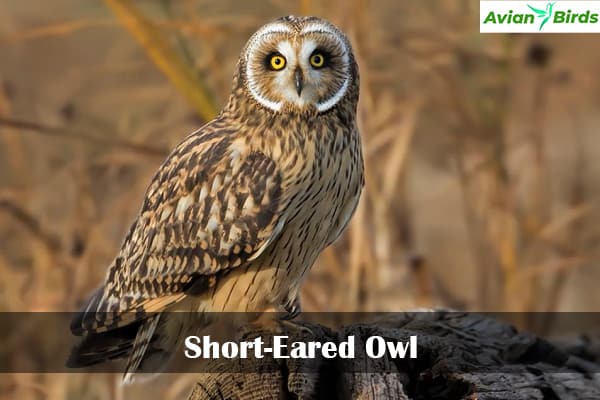
This owl is most active at dawn and dusk, making it a crepuscular hunter. Its long wings and sleek body help it move swiftly over fields and marshes. It hunts small rodents and other prey. You can find it in various places, from open fields to coastal areas and even cities.
However, the short-eared owl is facing challenges, with some populations declining. Its need for specific habitats and sensitivity to environmental changes are concerns. Conservationists are working to protect this owl and the state’s owl diversity. By learning about its needs, we can help ensure it stays in Virginia’s nature.
6. Long-Eared Owl
- Scientific name – Asio otus
- Lifespan – 12 years (maximum recorded)
- Size – 14 to 16 inches
- Weight – 7.8 to 5.3 oz
- Wingspan – 35 to 39 inches
Virginia is home to many owl species, but the long-eared owl is often overlooked. It has unique facial features, like long ear tufts, making it stand out. This owl is a key part of Virginia’s owl community.
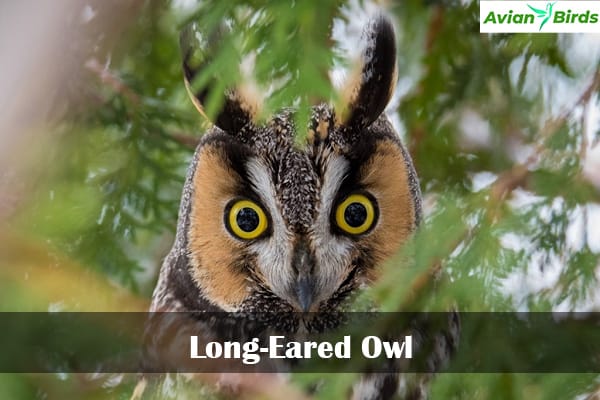
The long-eared owl lives in dense woods and stays hidden from view. It has amazing hearing and sight, perfect for hunting at night. It eats small mammals, birds, and insects, playing a big role in Virginia’s ecosystem.
Even though they’re hard to see, long-eared owls are vital to Virginia’s bird life. Conservation efforts help protect them, so we can still enjoy their beauty and importance. Seeing a long-eared owl in Virginia is rare and unforgettable.
7. Northern Saw-Whet Owl
- Scientific name – Aegolius acadicus
- Lifespan – 7 years (wild); 16 years (captivity)
- Size – 7 to 9 inches
- Weight – 2.2 to 5.4 oz
- Wingspan – 17 to 22 inches
The northern saw-whet owl is a fascinating bird in Virginia. It has a round head, big eyes, and a unique hooting call. This small owl is a joy to see in the wild. It’s one of the smaller owls in Virginia, giving us a peek into the state’s diverse owl population.

This owl is about 7-8 inches long and stands out with its brown and white feathers. They live in dense forests, finding the right mix of shelter and hunting spots. By day, they hide in thick plants or tree holes. At night, they hunt for small rodents, insects, and even smaller birds.
Even though the northern saw-whet owl isn’t endangered, its numbers in Virginia are watched closely. Habitat loss and other environmental issues are concerns. Conservation efforts aim to protect these owls and help them flourish in Virginia’s varied landscapes. With patience and luck, you might see this rare and fascinating owl during your outdoor adventures in Virginia.
8. Snowy Owl (Rare Visitor)
- Scientific name – Bubo scandiacus
- Lifespan – 10 (average) 23 years (oldest recorded)
- Size – 20 – 28 inches
- Weight – 56 -104 oz
- Wingspan – 50 – 57 inches
The snowy owl is not a common sight in Virginia, but its visits are always exciting. These big, white birds live in the Arctic and subarctic. Yet, they sometimes come south in winter, making Virginia’s skies a bit more magical.

This owl stands out with its white feathers, bright yellow eyes, and strong talons. It’s built for the cold, with thick feathers and sharp senses. These help it survive and hunt in harsh northern lands.
Even though they’re rare in Virginia, snowy owls are not endangered. Their numbers are steady. Their visits remind us of the many owl species in our area. From the common barred owl to the rare northern saw-whet owl, Virginia is home to a variety of these fascinating birds.
Tips for Spotting Owls in Virginia
Exploring Virginia’s owls is an exciting journey for nature lovers. Whether you’re an expert or just starting, there are ways to boost your chances of seeing owls. Learn about their calls and where they live to make your search better.
Listening to their unique calls is a great way to find owls. These calls are often heard at night or early in the morning. Get to know the sounds of owls like the Great Horned Owl, Barred Owl, and Eastern Screech Owl. This will help you find them more easily.
Also, focus on where owls like to live. Virginia has many places that owls call home, from deep forests to wide fields. Find out what each owl likes, like the Barn Owl’s love for open spaces or the Short-Eared Owl’s choice of grasslands. This info will help you spot owls more often.
Using what you know about owl sounds and homes will make you a pro at finding them in Virginia. Enjoy the excitement of the hunt and the joy of seeing these amazing birds in the wild.
Owls Found in Other Different Regions:
The Importance of Owl Conservation
Owls are key to Virginia’s ecosystems. They keep the balance by controlling small mammals and other prey populations. This helps keep their habitats healthy. It’s vital to protect these birds for the state’s wildlife.
In Virginia, owls face threats like habitat loss, vehicle collisions, and illegal trade. Conservation groups and government agencies are working hard to protect them. They use education, research, and advocacy to highlight the need for owl conservation.
You can help protect owls in Virginia by supporting conservation efforts. Volunteering, donating, or learning about their challenges can help. Together, we can ensure owls continue to thrive in Virginia’s nature.
Wrapping Up…
Virginia is home to a wide variety of owl species, from the majestic Great Horned Owl to the elusive Northern Saw-Whet Owl. Exploring their unique traits and conservation needs helps us appreciate Virginia’s wildlife more. It also lets us play a key role in their survival.
This guide has given you the key info to explore and celebrate Virginia’s owls. You’ve learned about the hunting skills of the Barn Owl and the silent flight of the Barred Owl. Your journey into the world of Virginia’s owls is bound to be unforgettable.
As you dive deeper into the world of owls in Virginia, remember your role is vital. Supporting conservation and sharing what you know helps protect these amazing birds. This way, future generations can also enjoy the beauty and grace of owl species in nature. Let the owls of Virginia touch your heart and mind through the joy of nature exploration.

